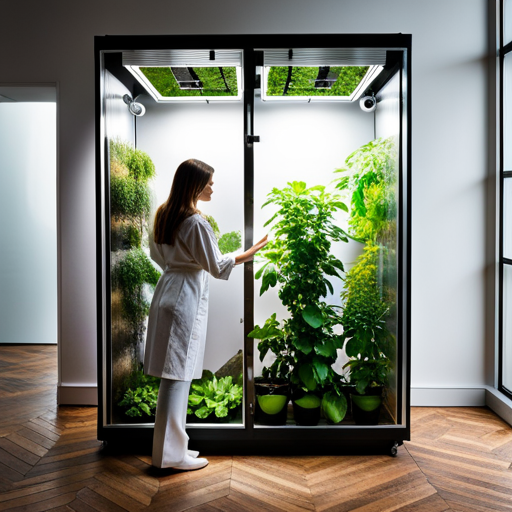 Loading... Please wait...
Loading... Please wait...Save Money. Grow Your Own!
Fast Plain Box Shipping.
We ship to the US & Canada.
888-493-7681
Grow Your Own!
Grow Your Own!
Creating the Perfect Indoor Garden: Guide to Setting up a Grow Box
Posted on 19th Oct 2023

If you’re someone who loves gardening but lacks adequate outdoor space or faces extreme weather conditions, setting up an indoor garden is the perfect solution. And what better way to create a thriving indoor garden than by using a grow box? In this article, we’ll take you through everything you need to know about setting up a grow box and creating your own little slice of green heaven.
What is a Grow Box?
A grow box, also known as a grow cabinet or grow chamber, is a self-contained system that allows you to cultivate plants indoors. These specially designed boxes provide an ideal environment for plants to grow, offering optimum control over factors such as temperature, light, humidity, and airflow.
Why Choose a Grow Box?
There are several advantages to using a grow box for your indoor gardening endeavors:
1. Space Efficiency: Grow boxes come in different sizes to accommodate various plants, making them ideal for small spaces like apartments or offices. They eliminate the need for outdoor gardens, saving valuable space while still providing bountiful yields.
2. Climate Control: Unlike outdoor gardens, grow boxes offer complete control over environmental factors such as temperature and humidity. This allows you to create the ideal conditions for your plants to thrive, regardless of the weather outside.
3. Year-Round Gardening: With a grow box, you no longer have to wait for the right season to start gardening. Indoor gardens allow you to grow plants year-round, giving you a constant supply of fresh herbs, vegetables, and flowers.
Setting up Your Grow Box
Now that you understand the benefits of using a grow box, let’s dive into the steps involved in setting up your own indoor garden:
1. Choose the Right Location: Find a suitable location for your grow box that receives adequate natural or artificial light. Avoid places with extreme temperature fluctuations or drafts that could affect plant growth.
2. Select the Right Size Grow Box: Consider the types of plants you want to grow and choose a grow box that can accommodate their growth. Seek advice from experts at hydroponics supply stores like Dealzer, who can guide you on the right size and features to match your needs.
3. Install the Necessary Systems: Once you have your grow box, it’s time to set up the necessary systems. Install the grow lights, ventilation fans, and a water system, depending on the type of grow box you choose. Pay attention to proper air circulation and maintain optimal humidity levels to prevent mold or disease.
4. Choose the Right Growing Medium: Select a hydroponic or soil-based system according to your preferences and the requirements of your chosen plants. Hydroponic systems utilize nutrient-rich water with no soil, while traditional soil-based systems use potting mixtures suited for indoor gardening.
5. Plant Selection: Choose plants that are well-suited to indoor gardening, such as herbs, leafy greens, or dwarf vegetable varieties. Different plants require different amounts of light, space, and nutrients, so research their specific needs before planting.
6. Maintain and Monitor: Regularly monitor and maintain your grow box by monitoring temperature, humidity, and nutrient levels. Adjust these variables as needed to ensure optimal growth. Keep an eye out for any signs of pests or diseases and take appropriate action promptly.
With these steps, you’ll be well on your way to creating a thriving indoor garden using a grow box. Remember to shop for all your hydroponics supplies at trusted stores like Dealzer, where you can find everything from grow boxes and grow tents to grow lights and hydroponic nutrients. Happy gardening!
Shop now at Dealzer for all your hydroponics grow box needs and transform your indoor space into a flourishing garden.
